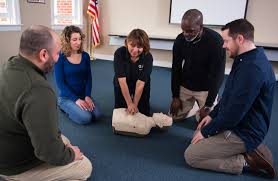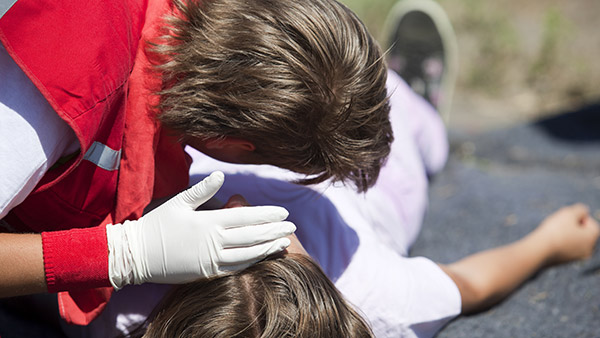Introduction
In our fast-paced world, emergencies can strike at any moment, whether in the house, work, or in public areas. Being prepared to react properly can make the difference in between life and death. This is where first aid comes into play. While many see a first help course as merely a requirement for sure careers or an addition to their resume, it extends much past that. It encompasses abilities that encourage people to act with confidence during emergencies.
First help expertise not just conserves lives however also improves neighborhood safety and security and builds durability among people of every ages. In this post, we will certainly check out the diverse duty of emergency treatment in everyday life-- exploring its importance, the training included, and how it gears up individuals with crucial abilities that resonate via numerous facets of life. So, buckle up as we dive deeper right into The Role of First Aid in Everyday Life: More Than Just a Certificate

The Duty of First Aid in Everyday Life: More Than Simply a Certificate
Understanding Initial Aid
First help describes the immediate care given to somebody that has actually endured an injury or ailment before professional medical assistance shows up. The goal is simple: support the patient's condition and prevent more harm. This may involve standard strategies like applying bandages, executing CPR (Cardiopulmonary Resuscitation), or utilizing an Automated External Defibrillator (AED).
It's crucial to acknowledge that first aid isn't just about physical injuries; it encompasses mental wellness emergency situations as well. As an example, giving assistance during a panic attack or acknowledging indications of shock can additionally be part of efficient initial aid.
The Significance of First Aid Training
Why must every person take into consideration enrolling in a first aid course? The answer depends on preparedness. Emergency situations are uncertain; nevertheless, being educated means you can react quickly and effectively when they occur.
Confidence Structure: Understanding just how to manage emergencies instills confidence not just in yourself but also assures those around you. Community Safety and security: Trained people add dramatically to general neighborhood security by offering assistance throughout crises. Legal Defense: Many locations have Do-gooder legislations that safeguard those that provide support in emergencies from lawful repercussions.The Framework of a First Aid Course
A common first aid course typically covers:
- Basic CPR techniques Use of AEDs Bandaging injuries Responding to choking cases Treating burns and fractures Managing shock and seizures Mental health initial aid
Courses might vary from fundamental training sessions lasting a couple of hours to extensive multi-day workshops where individuals make a first aid certificate upon completion.
Why Pick mouth-to-mouth resuscitation Courses?
CPR training courses particularly focus on mentor lifesaving techniques that can be utilized when someone stops breathing or their heart quits beating.
Key Parts:
- Adult, child, and baby CPR techniques Rescue breaths vs. chest compressions Recovery positions
According to different studies, timely mouth-to-mouth resuscitation can double and even triple the chances of survival for heart attack sufferers. Therefore, spending your time right into a CPR course is certainly worthwhile.
How to Select the Right Course
With various companies providing training worldwide, selecting the ideal training course might seem complicated. Right here are some suggestions:

First Help Skills Everybody Must Master
1. Choking Management
Choking is among one of the most typical emergency situations experienced daily; hence knowing exactly how to carry out abdominal thrusts (the Heimlich maneuver) can be lifesaving.
Steps:
Assess the circumstance-- ask if they're choking. Stand behind them, put your arms around their waist. Make a clenched fist with one hand and area it above their navel. Grasp the fist with your various other hand and drive internal and higher until they cough or breathe again.2. Carrying out CPR
As laid out earlier, CPR is crucial for anybody experiencing cardiac arrest:

Steps:
Call emergency situation solutions immediately. Begin upper body compressions at a rate of 100-120 compressions per minute. If educated, offer rescue breaths after every 30 compressions (30:2 ratio).3. Treating Wounds
Wound care might seem trivial however knowing how to cleanse and dress wounds correctly can stop infections:
Steps:
Wash hands thoroughly. Apply gentle stress with sterilized gauze up until bleeding stops. Clean around the wound with soap and water before using an antibiotic ointment and dressing.Mental Health First Aid
Emergencies aren't solely about physical injuries; mental health and wellness situations call for instant interest too!
Recognizing Indicators of Distress
Understanding indicators such as severe anxiety or visible distress aids you interfere appropriately:
Listen proactively without judgment. Offer confidence while encouraging professional help if necessary.Providing Support Throughout Crises
Be calmness yet assertive; leading a person via panic attacks making use of grounding strategies hltaid009 CPR Course can relieve their symptoms significantly.
The Effect on Families
First help understanding plays an indispensable duty within households-- developing satisfaction pertaining to security while supporting responsibility amongst youngsters as well.
Teaching Children Regarding First Aid
Instilling these abilities early on makes certain kids grow up comprehending just how vital it is to take care of themselves and others:
Use age-appropriate language. Engage them via enjoyable tasks like role-playing situations where they apply basic techniques!Workplace Security Culture
Employers should prioritize first-aid training within their office settings for various factors:
1) Conformity with Occupational Safety Regulations: Several workplaces should stick purely to security criteria requiring experienced personnel prepared during emergency situations-- decreasing responsibility dangers overall!
2) Increased Employee Spirits: Staff members feel hltaid009 CPR training near my location valued when business invest in their health-- developing strong group dynamics where members look out for each other's well-being promotes trust!
Conclusion
In final thought, accepting emergency treatment knowledge transcends simply obtaining qualification-- it embodies preparedness in the direction of life's unpredictability whilst supporting personal development in the process!
Investing time into discovering abilities such as CPR not only enhances individual capabilities however strengthens neighborhoods against prospective situations lurking around every corner! Inevitably becoming equipped saves lives while promoting much healthier cultures-- making it paramount that every person considers enrolling in thorough programs concentrated on both general 'first-aid' & & specialized 'CPR courses'.
Frequently Asked Questions
What is included in a common emergency treatment course?
A requirement first aid course commonly includes guideline on basic wound care, mouth-to-mouth resuscitation strategies for adults/children/infants, choking monitoring treatments together with dealing with shock/seizures successfully consisting of functional drills!
How long does it require to complete a mouth-to-mouth resuscitation certification class?
Most CPR certification classes vary from 4-- 8 hours depending upon whether they cover adult/child/infant specifics! Inspect local offerings for accurate timing information tailored specifically towards your needs/preferences!
Is my first-aid certificate valid indefinitely?
No! A lot of qualifications have expiry dates (frequently 2 years); normal renewal makes sure upgraded knowledge based on present guidelines/best practices!
Can I teach others once I finish my training?
While you gain important insights throughout these courses; official mentor calls for added qualifications/certification from acknowledged companies regulating instructor-led programs!
Are online courses reliable compared to conventional classes?
While online finding out gives flexibility & & ease; hands-on practice stays crucial especially regarding skill-development needed alongside theoretical understanding-- hybrid approaches often generate ideal results!
By integrating these necessary methods right into our lives we can promote safer settings all over! So why wait? Subscribe today for any kind of offered 'First-Aid' & & 'MOUTH-TO-MOUTH RESUSCITATION' courses-- you'll thank yourself later!